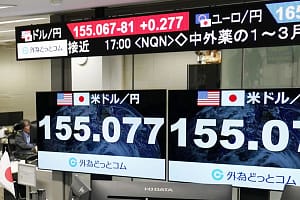Gold prices paused for two days of gains to begin trading on Tuesday at $2,329.30, after yesterday’s highs at $2,345 per ounce, amid weakness in the US dollar.
Despite no confirmation from authorities, there were intense selling pressures in the Japanese government, which supposedly sells the US dollar to buy the Japanese yen (JPY) to support its currency.
Currently, gold prices are trading sideways after retreating from their record highs at $2,430 in mid-April, when it became clear that interest rates would remain higher for longer in the United States.
This, in my opinion, made gold, which yields no return, less attractive as investors could earn more by holding onto cash.
From my perspective, persistently high inflation in the United States has contributed to resetting expectations for interest rates. Expectations previously priced in three 0.25% interest rate cuts in 2024, and now markets are expecting only one 0.25% cut due to the continued high inflation.
This week, confirmation of interest rate expectations will come when the Federal Reserve meets to decide on its monetary policy on Wednesday. In the meantime, gold prices may remain relatively low. Gold prices are likely to decrease in the short term if economic data remains steady and stubborn inflation persists, but it’s unlikely to continue until the end of the year.
So, I believe that once we start seeing disappointment or negative data surprises, investors may again become interested in interest rate cuts this year. Also, with the combination of Western demand and Chinese absorption, gold will likely move above recent record levels. In this scenario, a target exceeding $2,500 seems reasonable, albeit with low probability.
It’s worth mentioning that peace talks between Israel and Gaza in Cairo fuel optimism about easing tensions in the Middle East, boosting investor appetite for high-risk assets and diverting liquidity away from gold, which is considered a haven.
On the other hand, after Ukraine attacked more Russian oil refineries over the weekend and also requested more military assistance from the United States due to deteriorating conditions on the front lines, geopolitical risks remain and provide support for gold.
However, evidence that inflation in the United States is not receding as initially expected should be a force for gold and metals, which are seen as hedges against inflation, ahead of the two-day Federal Open Market Committee policy meeting starting next Tuesday, followed by very important remarks from Powell for the markets.
Investors are also awaiting important US data releases scheduled for early next month, including the Non-Farm Payrolls (NFP) report on Friday, which is crucial for determining price direction.




Leave a Comment